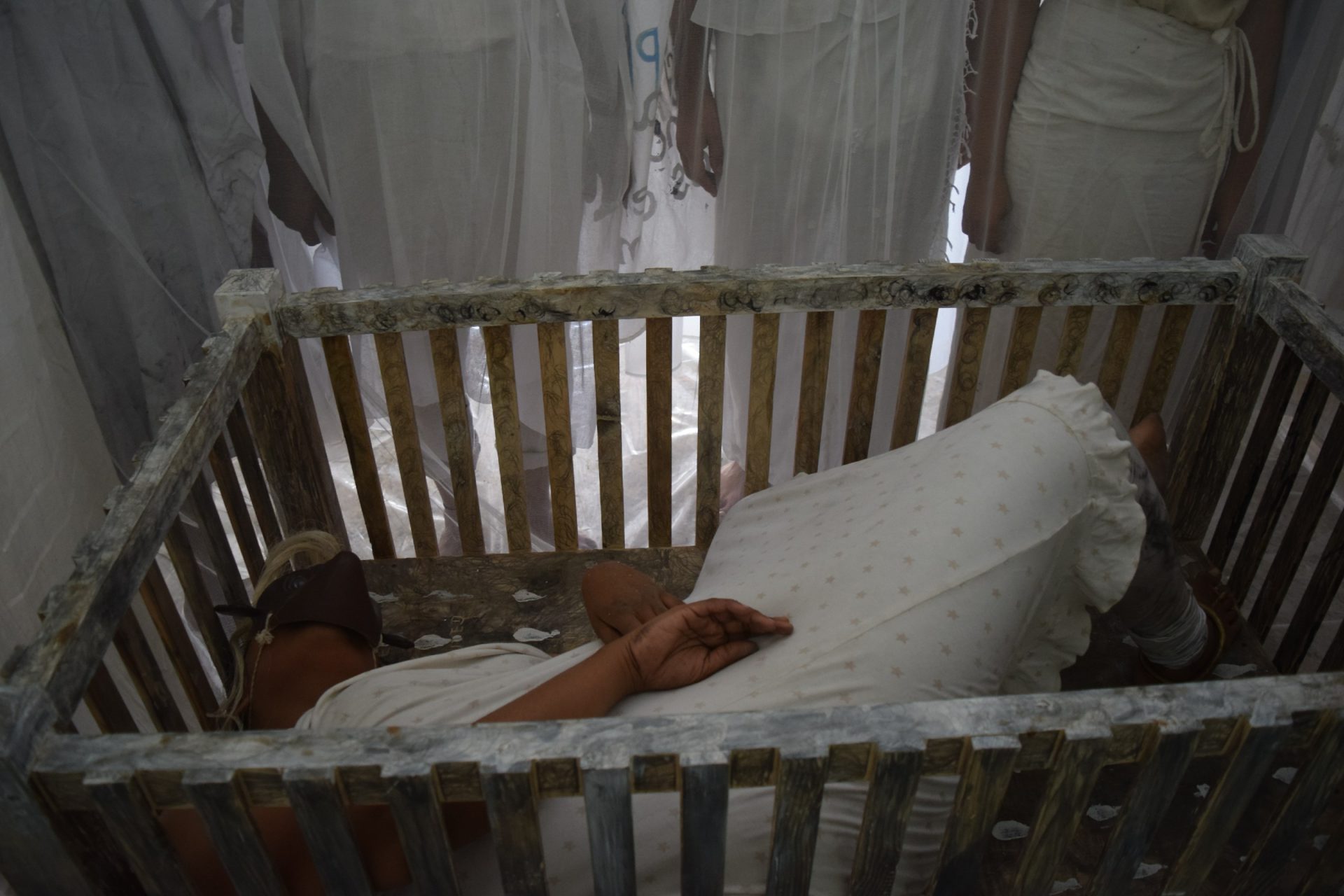
Captured at Wellawatte railway station which was burnt during the 1983 segregation revolts. Now exists as a cruising space from the 80’s onwards.
A speculative reclamation of the subversive omnipresence of queer existence within spaces, rituals, and trajectories.
Documentation of the work in progress.
What is a queer land?
It is a space between tensions, a transgressive body that keeps on transcending its materiality, formation, and epistemology. There are no cognitive enterprises that govern the “Queer Land” as all forms of bio-political conditioning wouldn’t be able to grapple with the existence of this land and its temporality.
It could be an architectural space that falls under an overtly sexualized territory, where sex or explorations subvert the definition of the initial construction built by the designer or the users. Perhaps these acts reclaim spaces that are historically, culturally signified, or portrayed under significant epi centers, completely devoid of their constructive paradigms.
Therefore, queer are ephemeral habitats built to transform into performative beings with time. The territories exist as a provocative entity in between constraints and potentialities.
Captured at Wellawatte railway station which was burnt during the 1983 segregation revolts. Now exists as a cruising space from the 80’s onwards.
Black prince or ‘ Kalu Kumaraya’ ( Sinhala term) is an entity known as an incubus being (demonic being is not to be used in this text as it’s considered as a colonial term) who charms virgin men and women. Wooed and bounded by this entity’s presence causes ill fortune, madness, hallucination, and calls as a form of possession. The entity causes women to become barren, infant deaths, and terminate embryos. Depiction of the entity by popular belief is that it succumbs only to women at times victim and the entity are entangled in a sexual relationship (which causes women to discard all attraction to the male bodies). Many oral narratives and archaic documentation by ethnographers depict the entity at times in both male and femme portrayals.
The entity resides in abandoned spaces, dark allies, spaces covered by canopies, spaces segregated spaces, and intersections, that could make secluded encounters. These spaces with narratives of fear, isolation, and despair which have provided solace, inclusion, and liberation for another community.
The protagonist ” Black Prince” begins to transform into a liberal foothold, a speculative reclamation of a subaltern existence.
The project is built in a series of performative activations with these spaces and creates alternative mapping. The inhabitants, strollers, and visitors lay still anonymous, secured of their existence yet the cultural masquerade reclaims these spaces and evokes a sense of proclamation.

This series is focused on three locations which are situated in Colombo city Sri Lanka. These locations are well known for their tragic backdrops that showcase the socio-political situation of Sri Lanka. They are also sites which have existed until the present as queer spaces. The site De Soyza does not exist any longer and therefore the performative act will be creating a 3D architectural virtual model of the space which is been utilized as a space for queer endeavors.
Wellawatte railway station, faced towards the sea side located in the Colombo maritime region. A significant locality, where the majority reside is the Tamil-speaking Hindu community. A minority, subjugated to many atrocities in Sri Lanka’s socio-political history, the location bears witness to the 1983 communal riots. Burned and destroyed during the event, many piers were lit up and many were thrown into the sea. The location is an active railway station and with the of twilight, it transforms completely into a land for many explicit encounters. The location has space provided a canopy of solace due to the fear of the past incidents and narratives entangled with the area.
Captured almost at dawn. End of the nocturnal beings time.

( In process)
Rio Cinema Complex is located on Slave Island. Burnt during the 1983 Black July massacre where the Tamil and Sinhalese civilians collided, it is owned by the Tamil Navaratna family and has now been preserved. The building still functions as a site screening seedy films and hosts many other forms of events. This space from the period of the 80s to the present has been a ground for generations of queers and other individuals as a closed-door hub for encounters and gatherings—one of the oldest running queer spaces for individuals coming from various classes, cultural identities. The building still exists in its deteriorating image, testimony to the violent past and present catastrophe of being erased (Slave Island is a prominent neighborhood in Colombo subjugated for de-territorialization and community annihilation).
De Soysa building was built in the 1870s by the famed philanthropist Charles Henry De Soysa (the wealthiest Ceylonese of the 19th century) the De Soysa building was located once in Justice Akbar Road, Slave Island. It was a heritage structure that used to function as a two-store block for commercial shophouses. This building was demolished in the year 2021, during the pandemic by the state. Demolishing of heritage sites has become a common phenomenon, which later leads to lands being sold off to multimillion-dollar international corporations.



